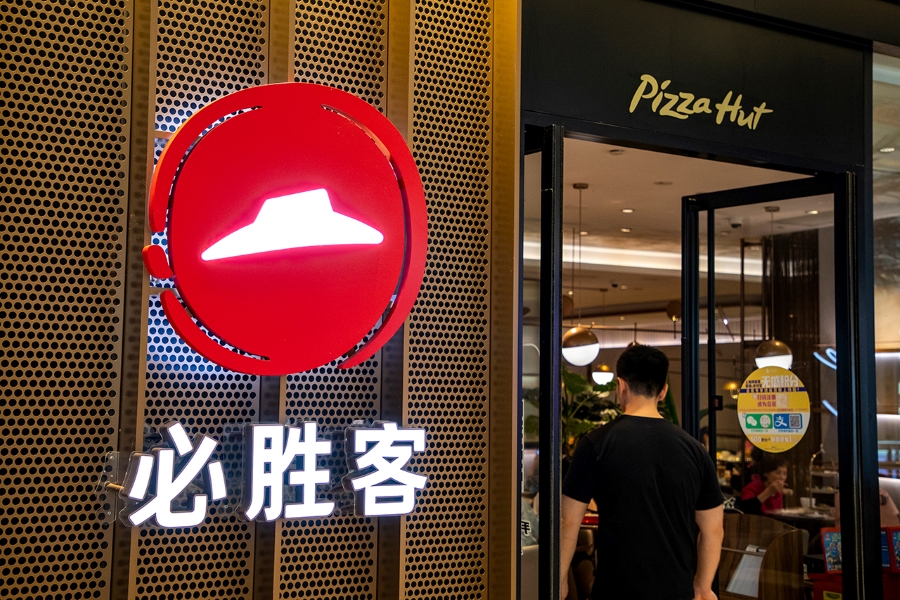Yum China Signals Post-Covid Spring with Dividend Hike, Accelerating Expansion

The operator of KFC restaurants in China said it temporarily closed a third of its stores late last year due to pandemic controls, but has seen business rebound with the end of ‘zero Covid’
Key Takeaways:
- Yum China’s revenue fell 9% in last year’s fourth-quarter as China imposed some of its harshest pandemic restrictions, though it continued its ability to remain profitable during the pandemic
- The company said its same-store sales grew by a mid-single digit amount during the Lunar New Year in January, and added it plans to accelerate its new store openings this year
By Doug Young
When the history books are written, the fourth quarter of 2022 will likely be portrayed as the end of a long, dark tunnel spanning three years of China’s battle to contain the Covid-19 virus. The latest quarterly results from Yum China Inc. (YUMC.US) show just how dark that tunnel was at the end, but also point to a brighter road ahead, following China’s sudden decision to abandon its “zero Covid” policy at the end of 2022.
Yum China’s results show how China’s three-year battle to contain the virus wrapped up in spectacular fashion, as major cities across the country locked down compounds and even entire districts, including nearby shops and restaurants. At the height of the lockdowns in late November, Yum China, which operates KFC and Pizza Hut restaurants on the Chinese mainland, had to shut down or limit operations at a staggering 4,300 stores – about a third of its total.
We’ll look at some of the other fourth-quarter fallout for Yum China and other major restaurant operators shortly, even though most of these companies are probably trying hard to forget this difficult period. But first we’ll look forward to some of the signs from Yum China’s results that show spring could finally be coming for China’s embattled retailers after the long Covid winter.
To recap briefly, China formally scrapped its “zero Covid” policy in early December, abruptly retiring a wide range of pandemic-control measures that strongly discouraged everything from travel to visiting shopping malls and dining out. That decision was followed by an explosion in Covid infections, which led to more widespread closures due to staffing shortages and lack of diners as most Chinese avoided eating out.
Things finally began to return to more normal conditions around mid-January, just in time for the Lunar New Year that is typically China’s most important holiday each year. The weeklong holiday usually sees millions of Chinese take to the road to return home for family gatherings, and that’s what happened this year after a pause in the usual migration over the last two years.
Government data showed that tourism-related spending rose 30% over the seven-day New Year holiday, and Yum China said it managed to record higher growth at its restaurants in travel hubs and popular tourist destinations during the same period. More broadly, the company said same-store sales for all of its restaurants over the holiday period were up by a mid-single digit amount from a year ago, though they were still down from pre-pandemic levels of 2019. Yum China also cautioned that business typically slows down a bit in the period directly after the Lunar New Year.
“2022 was filled with unprecedented challenges. In just 12 months, we managed sporadic Covid outbreaks, entire city lockdowns, nationwide infections and the sudden lifting of most dynamic zero-Covid policies,” said Yum China CEO Joey Wat on the company’s investor call, summarizing the latest quarter. “I am confident that our anti-fragile operations build upon our agility and resilience will allow us to shine and capture new opportunities.”
Signs of spring
The uptick in Lunar New Year business, after three years of declines, was just one of several signs that spring may be coming for Yum China and the nation’s battered retail sector. Yum China said it plans to open 1,100 to 1,300 new stores this year, which is likely to mark an acceleration from the 1,159 net stores it opened last year, bringing its total to 12,947 by the end of 2022. The other upbeat signal came on the stodgier finance front, with Yum China announcing it was raising its quarterly dividend to the highest level since it was spun off from former parent Yum! Brands Inc. (YUM.US) and separately listed in New York in 2016.
Wat pointed out that Yum China increased its store count by nearly 3,800 during the three years of the pandemic. “We have expanded the footprint by as much as 40% within three years. So, our view is we shall take advantage of the crisis and adversity,” she said on the call. “When we look forward from 2023 and beyond, I think we’ll continue our pace, which has been rather aggressive.”
Investors responded to the report by bidding Yum China’s Hong Kong shares up 2% in Hong Kong the day of the announcement. The stock is up about 25% over the last 52 weeks, and has rallied more than 40% since late October amid a broader rally for U.S.-listed China stocks after a long downturn for the group over several regulatory issues that now appear to be largely resolved.
The stock now trades at a relatively high price-to-earnings (P/E) ratio of 57 based on the 2022 results, though the figure drops to 35 on a forward basis on analysts’ expectations that the company’s profit will grow 63% this year as China’s economy rebounds. By comparison, Starbucks (SBUX.US), which counts China as its second largest market, trades at a lower forward P/E ratio of 30, while McDonald’s (MCD.US) trades at a forward ratio of 25.
Like Yum China, Starbucks’ China operation also felt the acute pain of China’s Covid finale in its latest results. It reported last week that its China same-store sales tumbled 29% in its quarter through Jan. 1, as many of its shops were closed and increasingly budget-conscious consumers probably didn’t feel like splashing out for a latte or cappuccino anyhow.
Yum China’s own same-store sales were down by a far milder 4% for the quarter, in no small part because the company was able to shift its focus to delivery and takeout dining as many of its shops were forced to limit operations and consumers dined out less. Executives noted on the earnings call that delivery and takeout accounted for nearly two-thirds of sales during the latest reporting quarter, including 45% from delivery.
As the company labored to maintain operations, its revenue fell 9% in the fourth quarter to $2.09 billion. Excluding foreign currency translation, the figure would have risen 2%. But the company managed to boost its restaurant margin by about 3 percentage points year-on-year to 10.4% by using cost controls and other measures. As a result, its adjusted net income, which excludes a big one-time gain from the previous year, actually rose to $52 million from $11 million a year earlier.
The company also made steady progress in expanding its Taco Bell Mexican food and Lavazza coffee chains to 91 and 85 stores, respectively, by the end of the year, as it seeks to diversify its portfolio.
At the end of the day, Yum China and its peers will inevitably look back on the past three years as a period they won’t soon forget. Yet at the same time, it also probably accelerated their cost efficiencies and forced them to innovate in areas like automation and off-premises dining – trends that should serve them well going into the post-Covid era.
The Bamboo Works offers a wide-ranging mix of coverage on U.S.- and Hong Kong-listed Chinese companies, including some sponsored content. For additional queries, including questions on individual articles, please contact us by clicking here.
To subscribe to Bamboo Works free weekly newsletter, click here





